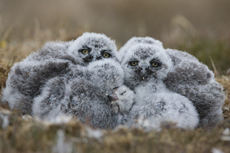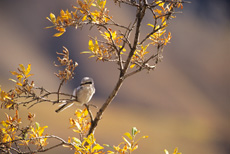| Arctic Wings: Miracle of Migration
Many of the birds we see in our backyards are just visitors—passing through in the spring on their way north, flying incredible distances to the Arctic to feed, breed, rest, and raise their young. They arrive at their destination just as the region is awakening from winter, having flown over oceans, forests, deserts, and mountains to get there. In the constant daylight of Arctic summer, the music of birdsongs fills the air. This long-distance migration of birds is a marvel, even with the mounting scientific knowledge we have to explain it. Hunger, instinct, and the drive to reproduce trigger migrating birds to move with the seasons, but don't explain why some travel so far—Arctic Terns can travel as far as 11,000 each way! Over 190 bird species from across six continents and all 50 United States migrate to the Arctic National Wildlife Refuge annually to take advantage of the 24-hour Arctic summer daylight and plentiful, rich food sources. Hundreds of thousands of birds nest on the coastal plain of Alaska during breeding season, mating and storing up fat for the long migration to southern wintering grounds. It is not an exaggeration that Arctic birds connect the world. Critical to the survival of global wildlife, the Arctic National Wildlife Refuge has also been identified as a prime oil drilling location, placing the Arctic Refuge directly at the center of heated environmental debates. This new environmental photography exhibit explores the amazing abundance of the Arctic during its brief summer and also addresses conservation issues facing this remarkably important region. Bring your class for a hands-on Discovery tour to accompany the exhibits The Last Polar Bear and Arctic Wings. Contact Burke Education for more information. Call 206-543-5591 or e-mail burked@u.washington.edu. |

Snowy Owl Chicks
Photograph by Paul Bannick

Northern Shrike
Photograph by Hugh Rose
Banner photograph: Arctic Tern
Photograph by Arthur Morris |

